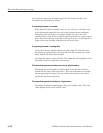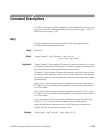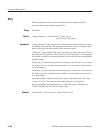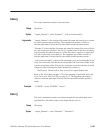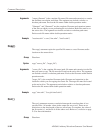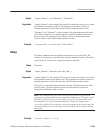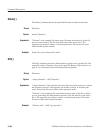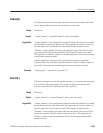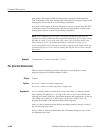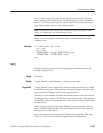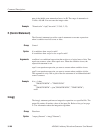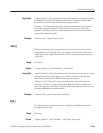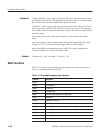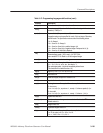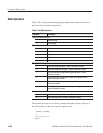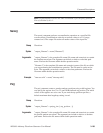
Command Descriptions
3-186
AWG610 Arbitrary Waveform Generator User Manual
start_point is the location of the first data point to extract from the input file.
This is an integer value. The starting point value must be less than or equal to the
ending point value or an error occurs during compilation.
end_point is the location of the last data point to extract from the input file. This
is an integer value. The ending point value must be greater than or equal to the
starting point value or an error occurs during compilation.
NOTE. This command lets you create a waveform file that does not meet the
instrument waveform minimum data requirement (minimum of 512 points, evenly
divisible by eight). If you create such a file, open it in a waveform editor, and
then attempt to save it, the instrument displays a dialog box asking you to
correct the problem. If you attempt to load the waveform in the Setup screen, the
instrument displays an error message stating that the file does not have enough
data points.
”shortsin.wfm” = extract(”sine.wfm”, 0, 511)
For (Control Statement)
The for (control statement) provides a structure for executing one or more
equation expressions a defined number of times.
Control
for <var> = <start> to <end> <expr> next
for <var> = <start> to <end> step <incr> <expr> next
var is a variable name to contain the for loop count value. A common variable
name used for this purpose is i. As long as the value of var is true (between the
start and end values, inclusive), the program executes the expression(s) in the for
loop. When var is false (var > end for incr > 0, and var < end for incr > 0),
program flow jumps to the line immediately following next.
start is a value or expression that defines the starting number (integer or real) of
the for statement loop count.
end is a value or expression that defines the end number (integer or real) of the
for statement loop count.
Example
Group
Syntax
Arguments



